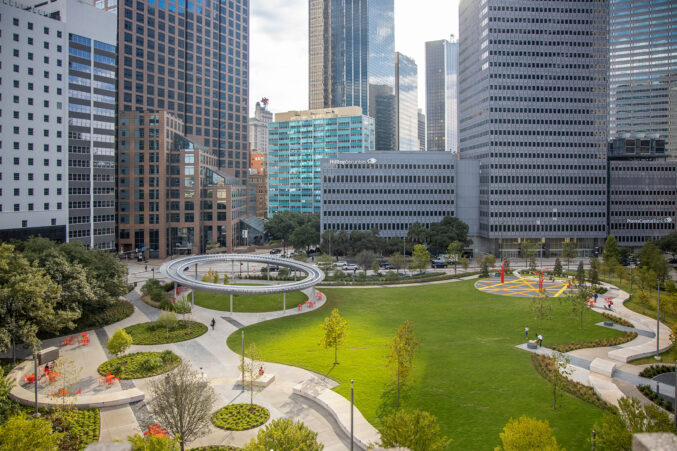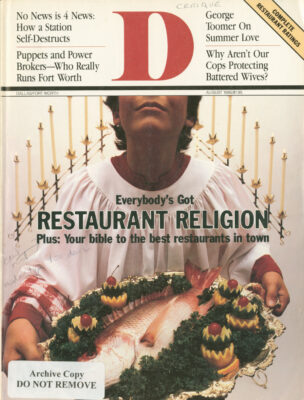In 1908 the Trinity River went on a rampage. Downtown Dallas was flooded. All the stores on Main Street were under water. One observer saw a manikin dressed in the latest style floating sedately out of Sanger Brothers’ main entrance.
Fortunately, on a hill just a few blocks away, but above the flood level, there stood a schoolhouse which is today the oldest standing public school building in Dallas, the Cumberland Hill School, built in 1889. It became a welcome refuge for those whose homes had been destroyed or severely damaged by the floodwaters.
Originally named after the Cumberland Hill Presbyterian Church, the school began its long and venerable career by serving the educational needs of the well-to-do families which then lived in that section of Dallas. As the veal’s passed, the school shed its elite image and became known for its versatility and for the wide range of nationalities represented among its students. By 1915. fifteen different nationalities were included in the student body.
One student of Cumberland Hill School thought so much of his alma mater that he eventually bought it. In 1!)7(). when the Dallas Independent School District offered the seh(X)l for sale, William P. Clements. Jr. offered the highest bid. After the building was renovated and restored to its original condition and beyond. it became headquarters for Clements” company, Sedco, Inc.. manufacturer of offshore drilling rigs.
It is appmpriate that the oldest and most historic school building in Dallas is also the most beautiful, the most democratic and produced the most prestigious alumnus. Bill Clements went on o become Texas’ first Republican governor in 100 years.
Get our weekly recap
Brings new meaning to the phrase Sunday Funday. No spam, ever.
Related Articles

Basketball
What We Saw, What It Felt Like: Mavs-Clippers, Game 6
At long last, Dallas defeated L.A.
By Iztok Franko and Mike Piellucci

Hockey
What We Saw, What It Felt Like: Stars-Golden Knights, Game 6
Dallas came up on the wrong end of the smallest margins.
By Sean Shapiro and David Castillo

Dallas History
D Magazine’s 50 Greatest Stories: When Will We Fix the Problem of Our Architecture?
In 1980, the critic David Dillon asked why our architecture is so bad. Have we heeded any of his warnings?
By Matt Goodman


